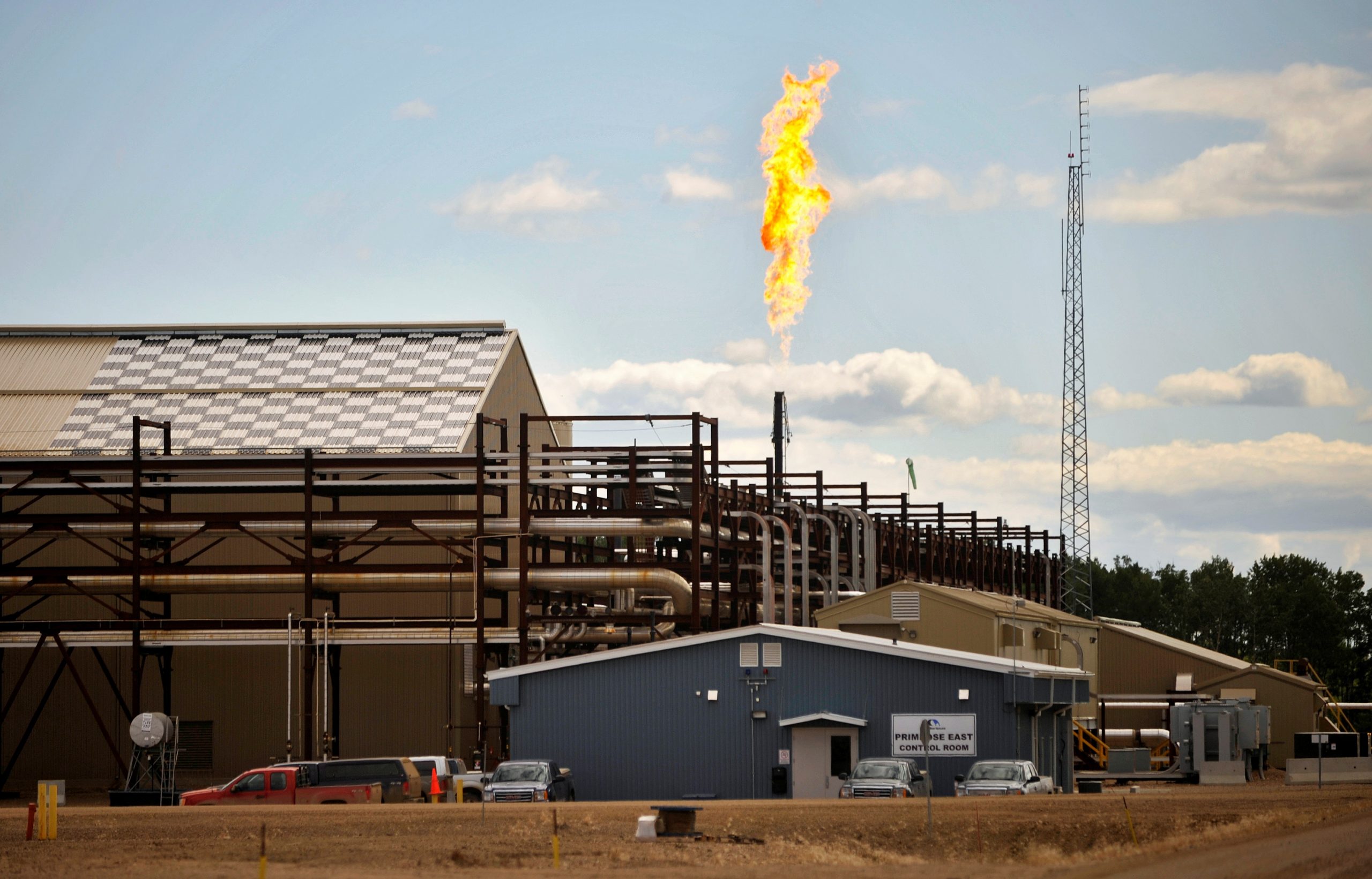In the shadow of Canada’s mega oil sands projects, smaller, technologically outdated facilities produce up to three times more emissions per barrel than the already high sector average- and rising oil prices have given them a new lease of life.
These projects present another challenge to Canada’s goal to cut emissions by 40-45% by 2030. With oil prices near 2-1/2-year highs and dim prospects for building new projects in a world heading toward net zero emissions, operators are aiming to pump as much as they can from existing facilities – including from the most carbon-intense sites.
Eventually, rising carbon prices may render the projects uneconomical. For now, however, producers are cashing in as they seek to repair their balance sheets from the damage inflicted by the coronavirus.
“These assets are flying under the regulatory radar and they might for awhile,” said Andrew Logan, senior director of oil and gas at shareholder advisory group Ceres.
Prime Minister Justin Trudeau‘s government is slowly ramping up a national carbon price from C$40 per tonne of carbon dioxide equivalent (CO2e) to C$170 by 2030.
For oil producers to make decisions in line with government targets, authorities would need to accelerate the move to higher carbon prices or impose other taxes on high-emissions facilities, Logan said.
Canadian Natural Resources Ltd’s (CNRL) Peace River site emits 0.197 tonnes of CO2e per barrel, the highest in the oil sands, according to 2019 Alberta government data. Peace River, which has pumped oil since the late 1970s, expects to double output to 5,000 barrels per day (bpd) in the fourth quarter.
“In the price environment we’re in now, areas like Peace River would be good operating properties in terms of cash flow,” said CNRL Chief Operating Officer Scott Stauth, adding it could operate for decades more.
Increasing production would reduce carbon intensity, he said. Raising output spreads total emissions from a facility over a higher number of barrels of oil.
GRAPHIC: Canada oil sands highest carbon per barrel – https://graphics.reuters.com/GLOBAL-OIL/CANADA/yxmpjabxzvr/chart.png
CNRL is piloting technology to use less steam to extract oil at larger sites, and once commercially proven, hopes to apply that technology to Peace River, Stauth said. That would reduce the natural gas burned to produce steam, a process that is one of the main sources of emissions in the oil sands industry.
Canada has the highest emissions per barrel of oil equivalent among the top 10 global producers, according to consultancy Rystad Energy.
Canadian Environment Minister Jonathan Wilkinson said the government has addressed some concerns about high-intensity sites, with measures such as tighter methane regulations and an incoming standard for lower-carbon fuels, but added it needed to do more.
Alberta regulations provide the same incentive for producers to cut emissions, regardless of their carbon intensity, rather than an approach which directly pressures operators to close the high-emissions facilities first, said Paul Hamnett, spokesperson for the provincial environment minister.
For producers, the cost of reducing emissions is higher than the carbon price, and operating costs are low, making it worthwhile to keep running the sites, said Chris Severson-Baker, Alberta regional director for the Pembina Institute.
Greenfire Acquisition Corp, which owns the second-highest carbon-intensity facility, is looking to double production at Hangingstone in the next few months to up to 7,500 bpd, Chief Executive Robert Logan said.
Logan said emissions intensity at Hangingstone is high because of starts and stops in production, which consume more energy. But he said keeping facilities running as long as possible makes environmental sense, since exploring and drilling new properties generate additional emissions.
When the price of carbon reaches the point that the facilities are no longer profitable, they may shut, he said.
“We’re going to be leaving a lot of oil in the ground from very good wells,” Logan added.
Imperial Oil’s Cold Lake has operated for 45 years and is one of the few large sites with relatively high carbon intensity.
Imperial produces 11,000 bpd with solvents to reduce steam use and plans to add another 15,000 bpd in the next few years – converting about 19% of its total thermal production to lower-emitting output, said Senior Vice-President of upstream, Simon Younger.
Cenovus Energy, which owns two carbon-intense sites, Tucker and Sunrise, plans to reduce their reliance on steam, after it acquired them this year, said Chief Executive Alex Pourbaix.
“People are going to be very pleasantly surprised at how significantly we can improve the performance of those facilities.”
(Reporting by Rod Nickel in Winnipeg; additional reporting by David Ljunggren in Ottawa; Editing by Simon Webb and Marguerita Choy)
Related

























